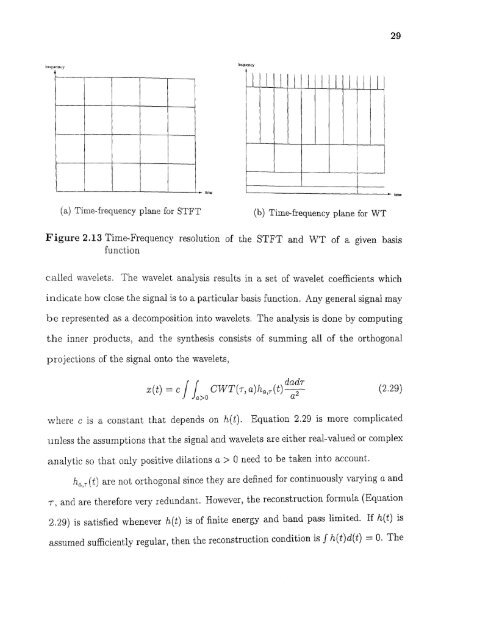Space/time/frequency methods in adaptive radar - New Jersey ...
Space/time/frequency methods in adaptive radar - New Jersey ...
Space/time/frequency methods in adaptive radar - New Jersey ...
Create successful ePaper yourself
Turn your PDF publications into a flip-book with our unique Google optimized e-Paper software.
29Figure 2.13 Time-Frequency resolution of the STFT and WT of a given basisfunctioncalled wavelets. The wavelet analysis results <strong>in</strong> a set of wavelet coefficients which<strong>in</strong>dicate how close the signal is to a particular basis function. Any general signal maybe represented as a decomposition <strong>in</strong>to wavelets. The analysis is done by comput<strong>in</strong>gthe <strong>in</strong>ner products, and the synthesis consists of summ<strong>in</strong>g all of the orthogonalprojections of the signal onto the wavelets,where c is a constant that depends on h(t). Equation 2.29 is more complicatedunless the assumptions that the signal and wavelets are either real-valued or complexanalytic so that only positive dilations a> 0 need to be taken <strong>in</strong>to account.ha,τ(t) are not orthogonal s<strong>in</strong>ce they are def<strong>in</strong>ed for cont<strong>in</strong>uously vary<strong>in</strong>g a andT, and are therefore very redundant. However, the reconstruction formula (Equation2.29) is satisfied whenever h(t) is of f<strong>in</strong>ite energy and band pass limited. If h(t) isassumed sufficiently regular, then the reconstruction condition is f h(t)d(t) = 0. The
















